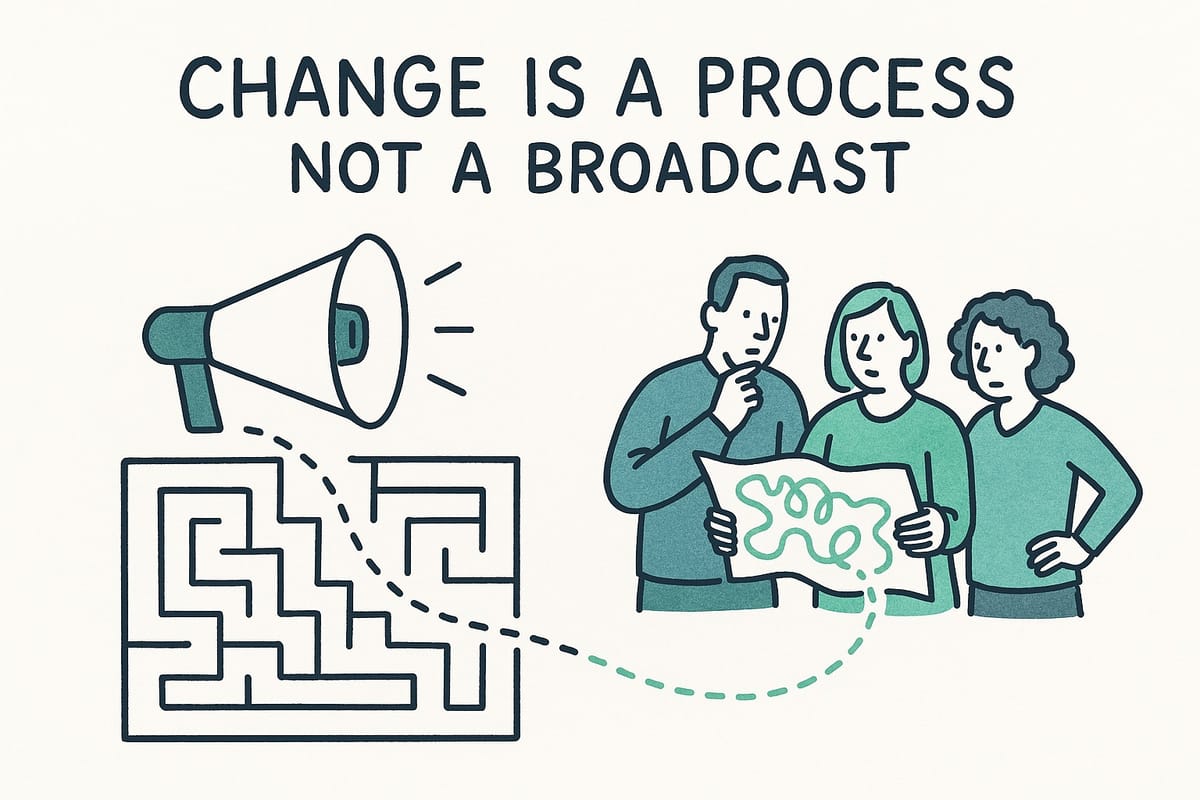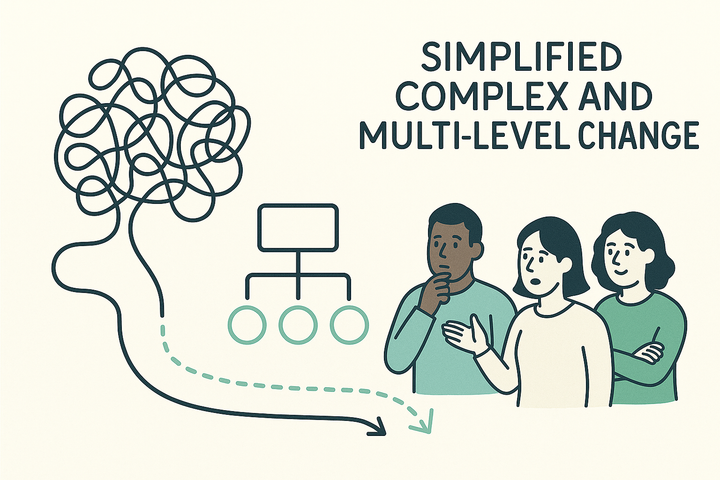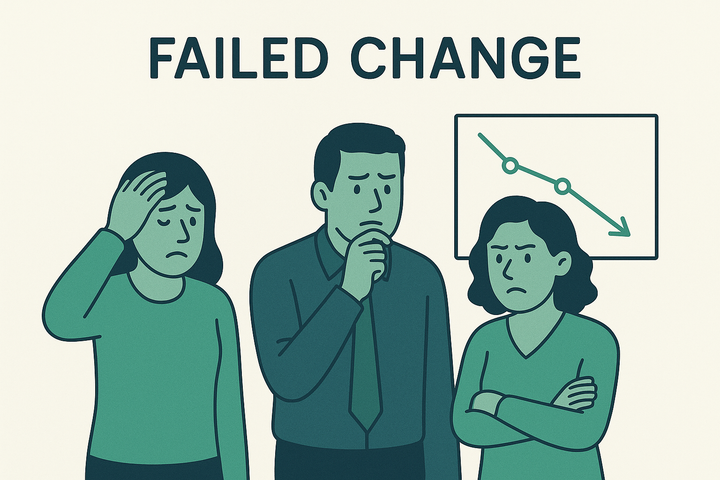How to Communicate Change
Most change communication fails because it’s bolted on too late or treated like internal PR. This no-nonsense guide breaks down how to build strategic, effective communication into the heart of your change programme - from sensemaking to behaviour activation.

Most change communications fail. Not because they’re poorly written, but because they’re poorly positioned.
When communication is treated like an internal PR job or something you do once decisions are made, it’s already too late. What you’re really doing at that point is damage control. The kind that kicks off resistance, disengagement and that quietly corrosive “why bother?” energy.
Communicating change isn’t about explaining a decision. It’s about shaping understanding, building alignment, and activating new behaviours. If you’re not doing those three things, you’re not communicating change. You’re just narrating a process no one feels part of.
Why it Goes Wrong So Often
In most organisations, communication is bolted on at the end—after the strategy is agreed, the project plan signed off, the leadership aligned in principle (but not in message). The comms team is then handed the job of “getting the message out.”
Cue the all-staff email, the webinar, the town hall, the poster in the lift. And then... confusion. Or worse, silence.
Because the truth is, people don’t change because they’re told to. They change when they understand why, believe it matters, and know what it means for them.
What Change Communication Is Really For
The job of change communication is to do three things:
- Make sense of what’s happening.
When people don’t understand the change—where it’s come from, why it’s needed, what’s really at stake—they fill the gaps with speculation and fear. Good communication makes the context clear, the decision-making visible, and the rationale real. This is sensemaking. It’s not a comms skill. It’s a leadership responsibility delivered through communication. - Align people around a shared direction.
Alignment isn’t just about words. It’s about coherence across leadership behaviour, messaging, priorities, decisions, and actions. When leaders say one thing and do another—or say different things entirely—it fractures trust. Communication done well builds alignment from the top and reinforces it consistently across the organisation. - Activate the behaviours that create change.
Ultimately, change doesn’t land unless people do something differently. That shift—whether it’s adopting a new system, letting go of an old way of working, or embracing a new mindset—has to be intentionally supported. Communication is how you surface what’s expected, make it possible to engage, and create momentum at scale.
We call this the Sensemaking–Alignment–Activation model. And we believe it’s the cornerstone of any serious change communication strategy.
How We Do It: Diagnose, Align, Act
At Rewired Work, we approach every change brief through a simple but powerful process: Diagnose. Align. Act.
We diagnose what’s really going on—what people believe, where the energy is, what the informal signals are saying. We align leadership, strategy and message into a single coherent direction. And then we act—with high-impact communication and behaviour activation that’s grounded in reality, not fantasy timelines.
Because here’s the uncomfortable truth: you don’t fix change fatigue with a new slide deck. You fix it with clarity, credibility, and consistent follow-through.
Six Principles for Getting It Right
1. Communicate early—even if you don’t have all the answers. Silence breeds fear.
2. Use narrative, not just information. People need meaning, not just messaging.
3. Over-communicate, and then do it again. Repetition builds trust.
4. Involve people in shaping the change. Nobody supports what they’ve been excluded from.
5. Adapt your channels to the task. Big shifts need dialogue, not just broadcast.
6. Make the invisible visible. Transparency is your credibility engine.
You might also want to read:
- How to Communicate Change
- The Sensemaking–Alignment–Activation Model
- Sensemaking in Change Communication
- Creating True Alignment for Organisational Change
- Activating Behaviour During Change
Need to Know if Your Change Comms Are Working?
Start with the Sound & Signal Review - our flagship diagnostic for organisations in the thick of transformation. It will tell you what’s landing, what’s missing, and where to go next.
Already mid-flight and need to course correct? The Rapid Action Accelerator is built to unstick stuck projects, align teams fast, and activate energy at the moments that matter.



